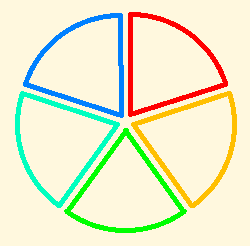Tuesday we reviewed expanded notation in decimal form
Take the following problems for example:
12.57~ 10+2+4/10+7/100
3.056~ 3+0/10+5/100+6/100
When writing in expanded notation if there's a zero in any position, such as the zero in the problem above it's not necessary to write it out, but for me personally it makes it a lot easier to remember which place value the numbers have.
We then went on to expanded exponential notation:
342.5~ (3x10^2)+(4x10^1)+(2x10^0)+(5x10^-1)
The final thing we reviewed was finding percents of numbers, we learned that one of the easiest ways to do so is with a number line, a strategy I'd never used before for this type of problem. It really did turn out be easy to understand in a more conceptual way.
For example: 60% of 30
By drawing the above number line you can see that adding 50% and 10% of 30 would be like adding 15 and 3 and your answer would be 18.
Thursday April 18th
We learned how to solve ratio story problems like the following:
Molly bought six heads of cabbage for $9.30, Willie goes to the same store and needs 22 heads of cabbage. How much will it cost him?
The easiest way to solve a problem like this is to set up a ratio table.
Cost, Number of Heads of Cabbage
4.65 3
9.30 6
18.60 12
23.25 15
32.55 21
34.10 22
By solving the problem this way you're just using the knowledge you already have to divide the amount until it's a manageable number.
For the rest of the day we finished our final homework assignment :)
Hope this post was helpful!






.png)








